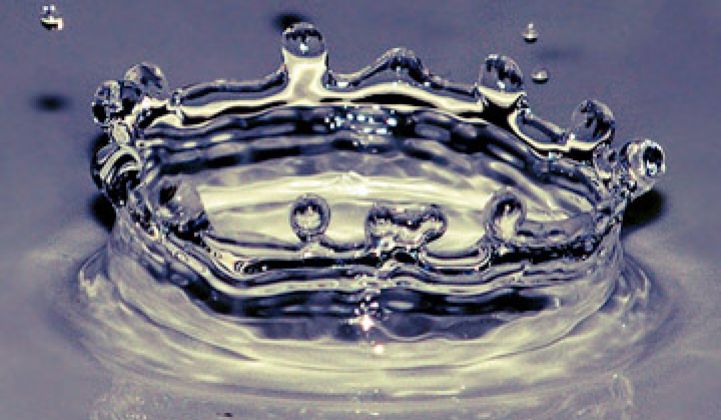How much is your home water bill?
Peter Yolles of WaterSmart Software said the typical U.S. water bill is $475 per year for a single-family home. But that can be much higher in southern California or Atlanta, Georgia, where Yolles quoted $1600 per year as a benchmark.
Water bills, rates and usage vary widely from region to region, but here are some averages from the Leakbird website:
- The average U.S. resident uses approximately 150 gallons of water per day (280 gallons per day in hot Sacramento, California).
- The average U.S. water bill for a household of four is $51 per month.
- Small town household water rates fall somewhere between $1.00 and $2.00 per 748 gallons of water or HCF (hundred cubic feet).
- Large city household water rates are from $2.00 to $3.00 per 748 gallons of water.
- Many large cities have tiered water rate structures where customers pay much higher rates for the water they consume beyond a certain predetermined amount.
And the price of water is trending higher every year, at a rate that exceeds the price increase of electricity.
The founders of WaterSmart Software want to develop better water customer engagement and water conservation for utilities. Peter Yolles, a co-founder at the boot-strapped firm, uses half as much water as he did a few years ago through his own conservation efforts -- despite the addition of two children to his household. The other founder, Rob Steiner, has worked at a number of water-focused investors.
The software-as-a-service (SaaS) firm with a focus on utility-customer engagement just raised $900,000 from Menlo Incubator, Draper Fisher Jurvetson, Physic Ventures, and Sand Hill Angels. Menlo Incubator is co-founded by Gary Kremen, founder of Match.com, Clean Power Finance and Los Altos Hills water district board member.
The firm wants to strengthen the relationship between residential water users and the water utility, as well as to use the "water-use data narrative" to allow customers to compare themselves against neighbors and people with like-sized homes.
Half of residential water is used outdoors, according to Yolles, so improvements are about more intelligent outdoor irrigation. Indoor water users are the usual suspects: toilets, shower heads, dishwashers, washing machines and faucets. WaterSmart will promote both behavior changes and retrofits of appliances and fixtures, with available rebates, discounts and services offered by water and energy suppliers.
Through their SaaS platform, WaterSmart will provide consumers with customized water saving tips and neighbor comparisons, and thereby deliver water use reductions to water utility customers.
Wait. Where have I heard this before?
This is Opower's business model -- except applied to water.
Opower is focused on electrical utility-customer engagement and behavior modification, and is currently providing tens of millions of homes with in-home energy data and efficiency advice via paper reports or online. The platform is described as advanced customer engagement. The firm says about 85 percent of their customers will cut power consumption by around 3.5 percent. The customized data lets people know how much energy they're using in comparison to their neighbors and then follows up with a suggested course of action. Revenues will exceed $35 million this year, according to sources at the firm.
WaterSmart would be well served to keep its eyes open for Opower entering this market. According to sources at Opower, "[Water usage is] absolutely something our product supports and we have a lot of inbound interest in it. We will likely have several water clients soon, but we're just so busy that to date, other major time-sensitive deployments have taken precedence."
It's easy to make comparisons to Opower but in the words of an anonymous greentech investor and water expert, "I’m not convinced about water savings taking off in the same way as energy efficiency. [... N]ot sure if the utilities have the same budgets, but also because they move slower."
Still, water is gaining much more attention amongst greentech investors, and the SaaS platform makes for a relatively capital-efficient operation in the usually capital-intensive water and energy market.
WaterSmart has two pilot projects underway in California and will expand its pilot program to include four additional water utilities in 2011.



